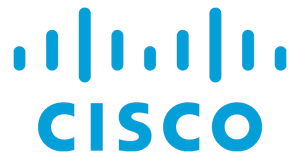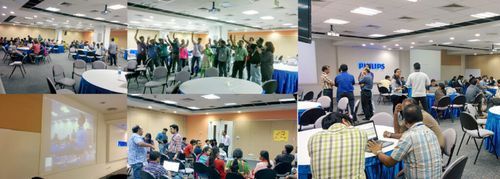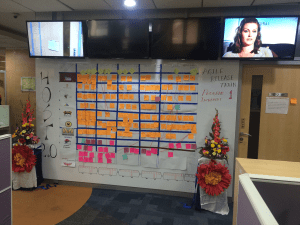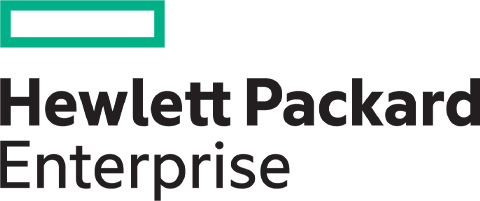
“Continuous delivery improved quality, increased productivity, and improved the employee experience.”
—Ashish Pandey, Technical Lead, CSIT Team
Challenge:
Cisco wanted to shift away from waterfall, and replace periodic major releases with continuous delivery of new features.
Industry:
Information Technology, Telecommunications
Results:
Cisco achieved significant improvements by using SAFe on two major projects:
- 16% drop in the defect rejected ratio (DRR)
- 40% decrease in critical and major defects
- 14% increase in defect removal efficiency (DRE)
- Improved employee satisfaction by eliminating the need for after-hours work and reducing meetings/calls
- 25 percent fewer quality assurance defects
- Sprints that ran more efficiently each subsequent time
Best Practices:
- Carefully build teams – Build teams with the best members from any location.
- Assemble the right tools – Cisco realized it could not have conducted regression testing every two weeks without test automation tools.
- Adjust as needed – For un-integrated or loosely integrated products, features or components, consider eliminating the Program level of SAFe.
Introduction
Cisco IT constantly looks for new ways to go faster and simplify. As part of its digital IT strategy, the Cisco Cloud and Software IT (CSIT) organization wanted to adopt more Agile development as a way to replace periodic major releases with continuous delivery of new features.

“Our goals are to speed up releases, increase productivity, and improve quality,” says Ashish Pandey, technical lead for the CSIT team.
Although a few small teams had adopted Agile techniques, waterfall was still the norm for teams that were large, distributed, or working on complex projects.
To solve these challenges, CSIT moved to the Scaled Agile Framework® (SAFe®) and immediately began applying scaled Agile practices on two major initiatives: their Subscription Billing Platform, and the Webex app for Samsung tablets..
Cisco® Subscription Billing Platform Challenge
For its Subscription Billing Platform (SBP)—which supports various subscription services—the company originally formed different teams for design, build, test and deploy. In waterfall fashion, each team began work once the previous team had completed their part.
- The separate tracks bogged down the process
- Release cycles exceeded three months
- They got late closure on requirements documents
- Teams missed delivery dates
- There were quality issues due to late integration cycles
- Teams worked long hours to make up for schedule slippage

The Solution
- On SBP, Cisco launched three Agile Release Trains (ARTs) in 2015: capabilities, defects and fixes, and projects.
- All three trains worked together to build and test small features within one SaaS component, while regularly delivering tested features to the system integration and testing team.
- Every day, the delivery team met for 15 minutes and determined action items.
Results – 40% Defect Reduction
Cisco delivered the new release of SBP on time and with all planned capabilities. When the company compared this release to those using waterfall, it found a 16 percent drop in the defect rejected ratio (DRR). Plus, critical and major defects decreased by 40 percent.
Continuous delivery also increased defect removal efficiency (DRE) by 14 percent due to greater collaboration among international teams, and by helping members identify opportunities for improvement during daily meetings.

The CSIT team attributes those quality improvements to several factors:
- Improving team collaboration and focus
- Enabling all team members to see current project status, promoting accountability
- Helping the three teams see beyond their own track
- Enabling teams to manage themselves
Additionally, the new way of working improved employee satisfaction by eliminating the need for after-hours work and reducing meetings and calls. Employees also saw how they fit into the bigger picture.
WebEx® App for Samsung
Challenge
In early 2014, the application for WebEx Meetings came pre-installed on Android tablets. Leading up to the release, developers had to work quickly to meet the release date, despite frequently changing requirements.
Solution
The team followed an Agile Scrum framework with three sprints for geographic rollout, the first two consisting of three weeks and the last of five weeks.
During planning, Cisco IT and others gathered requirements, and evaluated the readiness of environments, partners, and engineering and marketing teams.
Developers employed extreme programming, including test-driven development, where they first write an automated test case for a new function. Then they produced the minimal amount of code needed to pass the test and then refined code to make it simpler and easier to maintain.
Results – 25% Reduction in Quality Assurance Defects
On the WebEx app, Cisco reduced quality assurance defects by 25 percent. Plus, with developers checking code in several times a day, the business group reviewed new features sooner in the cycle than before. And each sprint ran more efficiently than the last.
Ultimately, Samsung sold more than 35 million tablets with the new app, creating wide exposure for the brand.
Share:
Back to: All Case Studies
Suggested Case Study: Royal Philips




















